In the United States, the 1960s saw the blossoming of political street theatre to address social and political tensions of the time. The San Francisco Mime Troupe, for instance, challenged racial inequality and El Teatro Campesino performed pro-labor skits during the Delano Grape Strike. These and similar companies used meager material resources and public spaces to challenge a culture of oppression.
Although overlooked as a politically charged medium, puppetry was a significant part of the 1960s political theatre scene. Founded in 1963 in New York City, Bread and Puppet Theater used giant rod puppets to challenge the police, landlords, and the Vietnam War. The organization is part of puppetry’s rich history of challenging power, from Punch and Judy shows mocking royalty in the 1600s to Sesame Street’s Oscar the Grouch anchoring a “trashy” news show called “Pox News.” Bread and Puppet’s legacy in the United States continues today as puppeteer alumni forge their own socially active theatres like All the Saints Theater Company in Richmond, Virginia, and BoxCutter Collective and Great Small Works in Brooklyn, New York.
Puppets have the potential to reflect the urgency of the times. In the tradition of Bread and Puppet Theater, puppets are constructed with what’s at hand: trash, castoff cardboard, scraps of fabric. At the minimum, a group wanting to construct puppets for a protest needs an X-Acto knife and a Sharpie because puppets can be sourced from cardboard in recycling bins at any location. Therefore, puppets can respond to social upheaval in the moment itself. Cardboard cutouts can be laid flat and stacked, allowing for dozens to be transported easily. They allow for acts of violence to be met with acts of creation.
In the essay “The Radicality of the Puppet Theatre,” Bread and Puppet Theater founder Peter Schumann writes that puppets are not taken seriously, which makes them especially good lowbrow vehicles for political performance. The prevailing assumption is that puppets are for children. But now, more than ever, social movements and protest groups need the emergent qualities of puppetry—qualities understood through both watching and performing—to challenge the status quo and articulate our society’s demands. Beyond their ability to hide the crucial conversations of our time behind smiles and laughs, puppets aid socially engaged groups during protests in additional ways:
- By amplifying tension in places of power
- By creating a more accessible message
- By evoking solidarity through performance
Amplifying Tension in Places of Power
In the summer of 2020, there were massive and immediate protests demanding justice for George Floyd, Breonna Taylor, Ahmaud Arbery, and many other Black people killed by law enforcement officers in the United States. These responses occurred at the geographic sites of violence, like Milwaukee and Louisville. What happened in 2020, and what is a common during social unrest, is that subsequent planned marches sprouted in communities across the country. It is at these ally-driven subsequent planned marches where puppets might be spotted. I suspect this is because some puppets, like those made from foam or papier-mâché, take time to create and transport, meaning there’s often not enough time to create them for the initial protest. However, the potential exists to employ roughly fashioned cardboard puppets at earlier stages of civil unrest.
Planned marches are much different than spontaneous protests. They are permitted by local governments and their routes are strategically plotted from point A to point B. Police arrive early and block off streets. Into this street space, puppets amplify points of tension by creating chaotic energy in a controlled, permitted, confined space. Human protesters conventionally move at one speed, following the leader from the route’s beginning to its end. Puppets are not confined to the same plotting movement as people. They move up and down, side to side, very fast, and very slow. Two-dimensional cardboard cutouts, like fists, are especially good at building fast, chaotic energy. Each held aloft by an individual person, twenty or thirty of them can create waves, thrust outward to mimic an explosion, or gesture together toward another puppet representation. Alternatively, giant rod puppets seem to move much more slowly than human protesters, as if they come from the celestial realm or the pits of hell. These towering figures are excellent foils to the two-dimensional puppets, embodying either oppression or relief.
Although overlooked as a politically charged medium, puppetry was a significant part of the 1960s political theatre scene.
Puppets can create a buffer between protester and state power. The political vigilante art collective Guerrilla Girls, who hide their identity behind gorilla masks, have famously said, “If you’re in a situation where you’re a little afraid to speak up, put a mask on. You won’t believe what comes out of your mouth.” Similarly, puppets are vehicles to express risky ideas with less individual risk. Because puppetry is a collective act, it allows individuals to feel more comfortable speaking up and it makes them less visible to police and angry counter-protesters.
Puppetry may make participants feel safer, but it is important to note taking part in it is not completely without risk. During the 2000 Republican National Convention in Philadelphia, for instance, police let a SWAT-like raid on a puppet-making warehouse and puppeteers were among the more than four hundred arrested.
Within protest marches themselves, short puppet skits create new, separate spaces. The street is transformed into a play space, and for just a moment puppets and puppeteers control the road as onlookers gather to observe. In this simple but powerful way, puppetry disrupts the constraints of a permitted march, creating tension between what is allowed (by police, by local governments, by convention) and what is outside expectations. In this way, puppets amplify what protests, at their core, are about: contestation between the conventional status quo and how protesters imagine the future should be.



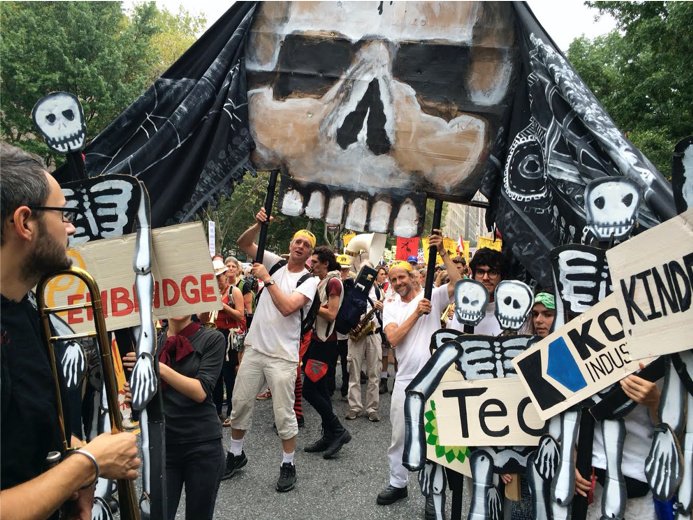
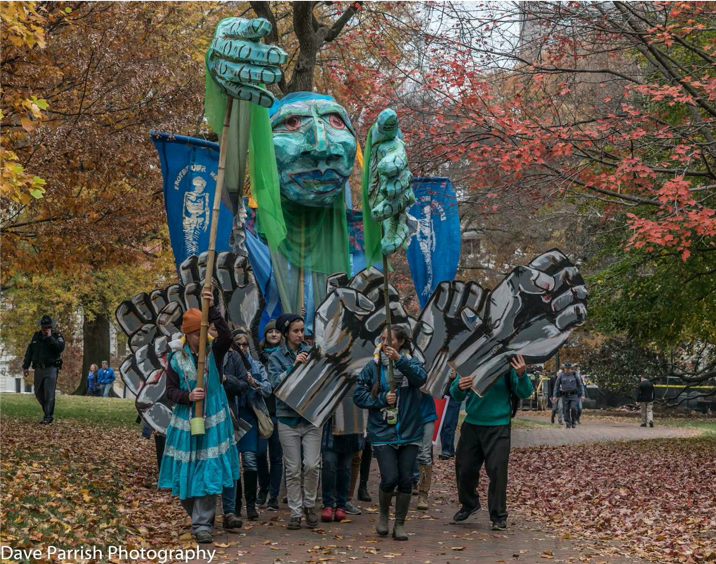
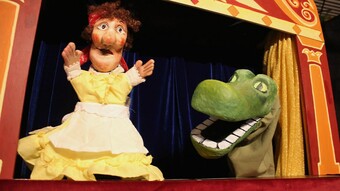

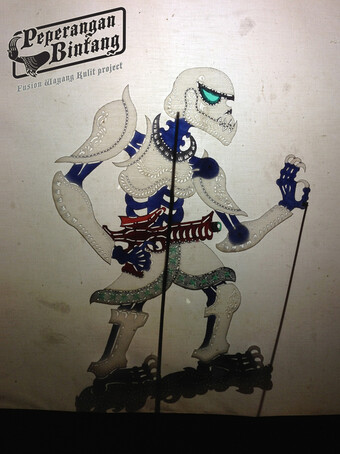

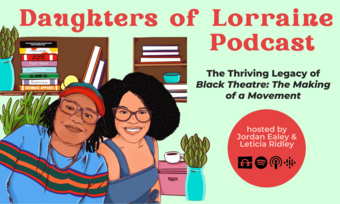


Comments
The article is just the start of the conversation—we want to know what you think about this subject, too! HowlRound is a space for knowledge-sharing, and we welcome spirited, thoughtful, and on-topic dialogue. Find our full comments policy here
https://www.walkwithamal.org/
Excellent essay. Another example to add to the list is Goodspring and Handspring's WALK WITH AMAL, which uses a 3.5 meter high puppet of a refugee (Amal) who will walk from Turkey to England over a 4 month period, engaging with artists all along the way and promotes hope and support of refugees.